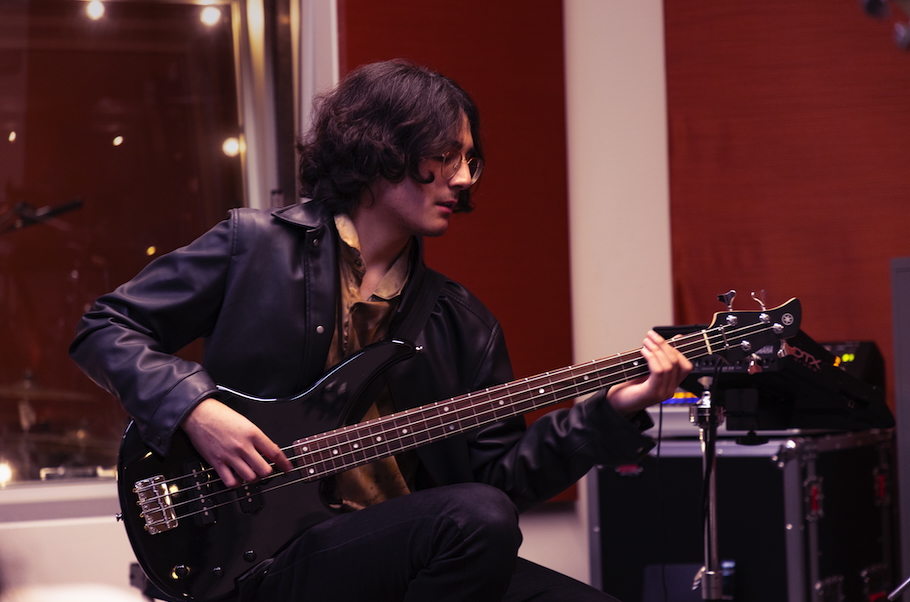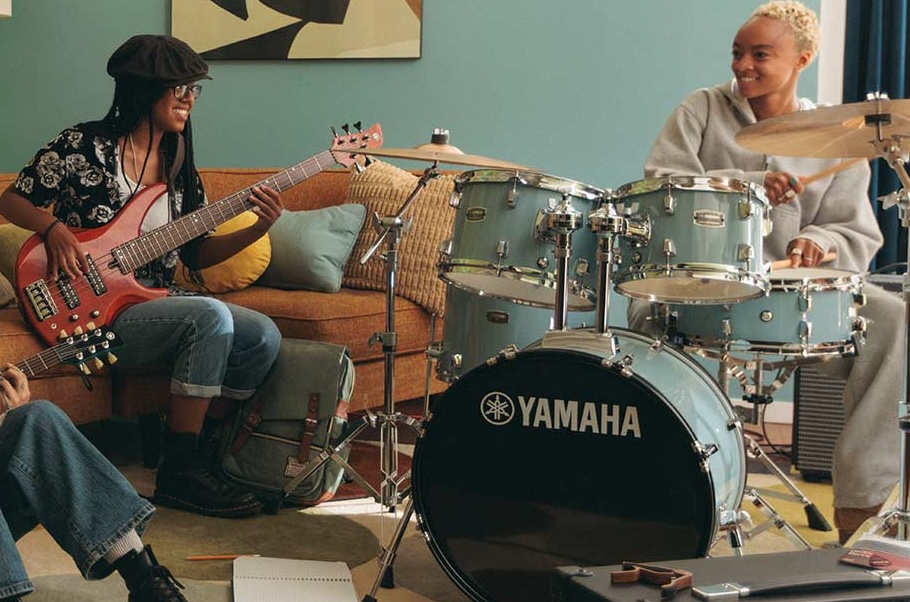How To Build a Pedalboard for Bass
Place your bass effects pedals in the right order for the sound you’re after.
Effects pedals offer dozens of ways to subtly (or radically) shape your bass tone, making it easy to put a distinctive stamp on your playing. With the right effects, you can recreate the sounds of other instruments, introduce sound effects, and even accompany yourself.
We’ve covered the top 10 bass effects before, but if you use more than one pedal, the order in which you place them (that is, the signal chain) can make all the difference. In this posting, we’ll explore some of the many options available to you.
TUNER
Plugging your bass into a tuner at the beginning of your signal chain (i.e., before any effects) is pretty much a universal rule, as it ensures that the tuner accurately determines your pitch. Many bass players choose tuners that are buffered bypass or true bypass, which means that when the pedal is not engaged, the bass signal completely bypasses the pedal’s internal circuitry, thus avoiding potential noise. The two most important goals for effective pedal sequencing — preserving the strength of your bass signal and avoiding unwanted static and hum — begin with the tuner.
DYNAMICS AND PITCH
As your signal makes its way from your bass to your amp, pedals that need a hotter signal function better closer to the source: your bass. Wah pedals fall into this category, as do compressors, which fatten your signal and make it more even; limiters, which provide a more drastic form of compression; sustainers, which help your notes ring out longer; octavers (also known as “octave dividers”), which generate notes an octave below what you are playing, thus adding anything from extreme bottom end to a bit of menace; harmonizers, which add intervals to your notes; and pitch shifters, which can lower or raise your pitch. Synth bass and envelope filter pedals also work best when placed soon after the tuner and before other effects.
DIRT
Fuzz, distortion and overdrive need plenty of signal, too, so it’s common to place them after a compressor or other signal booster. Explore the full spectrum of dirty options: An overdrive pedal like Ampeg’s Scrambler Bass Overdrive can conjure the sound of a gently overdriven tube amp, while an aggressive pedal with lots of buzzy highs makes it easy to completely obscure your clean bass tone. Develop an ear for the way other combinations — like octave divider/distortion and fuzz/compression — might or might not work for you.
EQ, VOLUME AND NOISE GATE
If you’re playing an active bass and have used your onboard bass preamp to add bottom and/or mids to your dirt pedals (which usually contain lots of high-frequency information), an equalizer (EQ) pedal can help you dial things in before your signal reaches the time-based effects. It’s not unusual to add a boost, preamp or volume pedal here, and it’s also common to add a noise gate after your dirt pedals to tame unwanted noise by cutting off the signal whenever it drops below a certain threshold.
TIME-BASED EFFECTS
These effects — which include chorusing, phasing (“phase shifting”), flanging, tremolo, ring modulation and “repeater” pedals (which can provide anything from echo to a version of tremolo to a looper) — need a bit less signal than dynamics, pitch and dirt. Some players add a compressor before these pedals so that their tone is even, while others prefer the dynamic variation and detail that comes from low compression settings or no compression at all. Many bass players have made great use of chorusing, flanging and phasing as standalone effects (as, for example in the O-Jays classic “For the Love of Money”), but placing these kinds of pedals later in the signal chain allows them to add a bit of shimmer to the sound coming from any pedal(s) earlier in the chain.
DELAY, ECHO AND REVERB
Like time-based effects, delay is less dependent on pure signal. Placing it near the end of your signal chain gives you the opportunity to expand your fully effected signal; similarly, reverb and echo can add a sense of space and ambiance to your overall sound. Most (but not all) players prefer to put delay before reverb; try it both ways.
REMIX AND LOOPER
This family of effects — which includes slicer, stutter, glitch, reverse, sampler and looper pedals — makes the most sense at the very end of your signal chain. That said, adding an effect to whatever you’re looping and remixing can work too. A reverb or pitch-shifter after any of these pedals, for example, can dramatically alter the original sound.
MIX AND MATCH
Expressed in shorthand, an ideal sequence of the most commonly used bass pedals might look something like this:
tuner -> wah -> compressor -> octave divider -> distortion
A slightly more extended signal chain could be:
tuner -> wah -> compressor -> octave divider -> distortion -> EQ -> chorus -> delay -> reverb
An even longer sequence might be:
tuner -> wah -> compressor -> octave divider -> pitch-shifter -> distortion -> fuzz -> EQ -> chorus -> phaser -> delay -> reverb -> looper
Alternatively, you can prioritize sending a strong signal to your dirty pedals before adding complex flavors and controlling volume before it gets to your amp, like this:
Distortion/fuzz/overdrive -> pitch shifter -> wah -> chorus -> envelope filter -> synth -> ring mod -> delay -> looper -> volume pedal
Not having a compressor means that you can preserve the full dynamic range of your playing, from delicate chords and flamenco-style strums to thunderous plucks and slaps.
Pedalboard order is a matter of personal preference. Using good cables and your amp’s effects loop are two more ways to avoid degradation of signal, or as bassists usually put it, “tone suck”; also consider trying an effects switcher (sometimes called a “loop switcher”), which will give you the ultimate freedom in pedal sequences. By experimenting with your signal chain, you can find what works for you; consider these tips as a starting point that gives you the best chance to maintain a strong bass tone, avoid unwanted noise and give each of your pedals a chance to shine.














